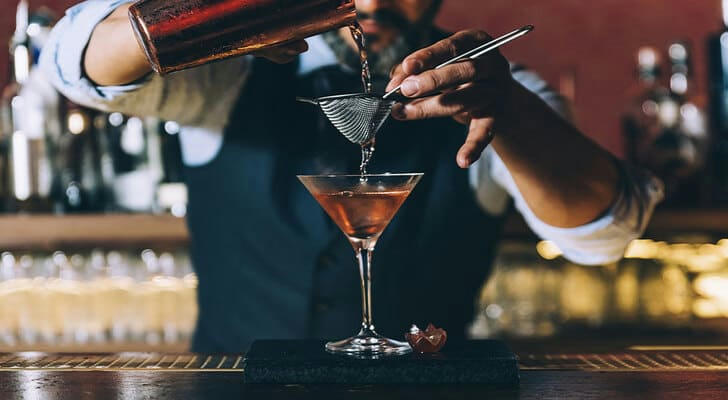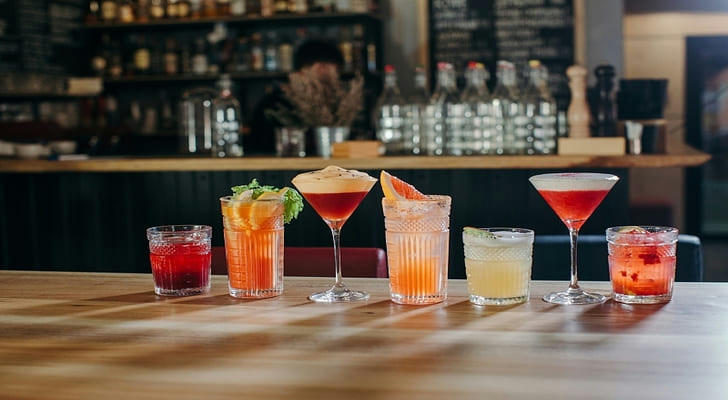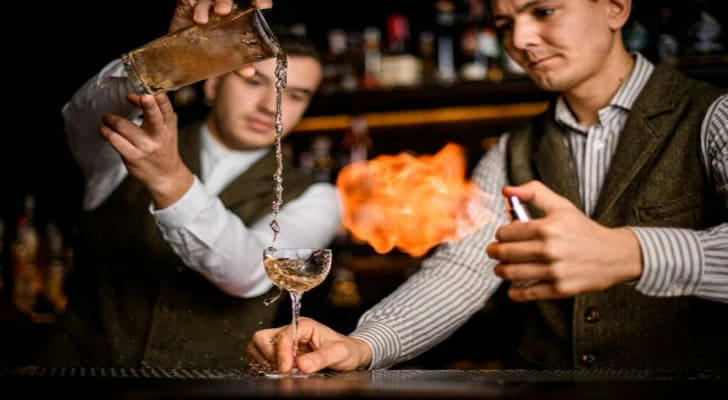How to become a good bartender?
Bartenders in the U.S. are more than just skilled performers behind the bar—they are integrators of culinary culture, flavor science, and client experience. From mastering classic cocktails to experimenting with molecular mixology, and from neighborhood pubs to Michelin-starred restaurants, diverse industry demands require specialized training. This article dissects the core modules, technical focuses, and career advancement strategies within U.S. bartending programs, providing a roadmap from novice to expert.

I. Core Categories of Bartending Courses and Their Applications
U.S. bartending programs are divided into four primary categories, each tailored to specific career goals and skill levels.
1. Foundational Bartending Certification
Target Audience: Beginners aiming to grasp basic spirits knowledge, techniques, and service protocols.
Leading Institutions:
BarSmarts by Pernod Ricard: Hybrid online/offline courses covering six base spirits (gin, vodka, rum), classic cocktails (Martini, Manhattan), and essential tools.
ABC Bartending Schools: Nationwide programs with 300+ hands-on hours, focusing on Boston shaker techniques and layered cocktails (e.g., B-52 Bomber).
Curriculum Highlights:
Modular Training: Master core methods like stirring, shaking, and building.
Simulated Bar Scenarios: Role-play customer interactions, conflict resolution, and handling intoxicated patrons.
2. Advanced Mixology & Flavor Profiling
Target Audience: Intermediate learners targeting craft cocktail bars or product development.
Leading Institutions:
The Cocktail Camp (NYC): Features:
Flavor Deconstruction: Using centrifuges to isolate juice components for innovative combinations (e.g., smoked pineapple foam).
Hyper-Local Ingredients: Designing seasonal menus with farm-fresh herbs (lavender, rosemary).
Death & Co. Academy: Taught by a top 10 U.S. bar team, focusing on sensory balance theory (sweet, sour, bitter, salty, umami ratios).
Curriculum Highlights:
Molecular Techniques: Spherification, sous-vide infusions, and liquid nitrogen applications.
Brand Collaborations: Partnering with brands like Maker’s Mark to develop exclusive cocktails for commercial menus.
3. Specialization Tracks
Niche Focus Areas:
Tiki Culture & Tropical Mixology:
- Smuggler’s Cove Academy (San Francisco): Teaches Tiki mug carving, homemade bitters (e.g., Allspice Dram), and flaming drink theatrics.
Spirit Sommelier Programs:
- Whiskey Steward Certification (Kentucky): Covers bourbon distillation, barrel-aging flavor profiles, and single-cask blending.
Zero-Proof Mixology:
- The Mindful Bartender Program: Crafts alcohol-free cocktails using distilled floral waters, fermented teas, and botanical extracts.
4. Bar Management & Entrepreneurship
Target Audience: Aspiring bar owners or hospitality consultants.
Leading Institutions:
USBG (United States Bartenders’ Guild): Covers:
Cost Control & Inventory Optimization: Calculating pour costs via PAR (Periodic Automatic Replacement) systems.
Team Leadership: Designing skill matrices and career progression frameworks.
MIX Lab Hospitality (LA): Teaches bar design (layout psychology, lighting) and thematic storytelling (e.g., speakeasy concepts).
II. Five Pillars of Elite Bartending Curricula

Top programs integrate technical mastery, creativity, and business acumen through structured learning.
1. Spirits Science & Sensory Training
Distillation & Fermentation: How ingredients (barley, agave, sugarcane) shape flavor profiles.
Blind Tasting Drills: Identifying spirit origins, aging methods, and blends (e.g., single malt vs. blended whisky).
2. Technical Precision & Tool Mastery
Tool Applications:
Shaker Types: Boston vs. Cobbler shakers for specific cocktails.
Jigger Precision: Achieving ±1ml accuracy with Japanese jiggers.
Advanced Methods:
Clarification: Milk-washing to refine texture and clarity.
Cryogenic Mixing: Using liquid nitrogen (-196°C) to control flavor volatility.
3. Creative Design & Aesthetic Execution
Garnish Artistry:
Citrus Twists: Spiral-cut peels and pineapple leaf weaving.
Edible Florals: Gold leaf, butterfly pea flower ice spheres.
Narrative Menus: Thematic drink lists inspired by history (Prohibition era) or culture (Caribbean piracy).
4. Legal Compliance & Ethical Responsibility
Alcohol Laws: TIPS certification for preventing DUIs and spotting fake IDs.
Sustainability: Zero-waste practices (e.g., citrus peel bitters, spent-grain composting).
5. Digital Tools & Branding
Bar Management Software: Training on Backbar or BevSpot for inventory and sales analytics.
Social Media Marketing: Creating Instagram Reels with refractive lighting and slow-motion effects.
III. Four Metrics for Evaluating Bartending Programs
1. Instructor Expertise & Industry Ties
Credential Checks: Prioritize World Class competition winners or alumni of bars like Attaboy NYC.
Accreditation: Does the program offer IBA (International Bartenders Association) or USBG certifications?
2. Hands-On Training & Equipment
Practical Hours: 60%+ hands-on time for foundational courses; molecular tools (rotary evaporators) for advanced labs.
Spirit Libraries: Access to 100+ base spirits, house-made syrups, and rare bitters (e.g., Scrappy’s Lavender).
3. Career Support & Networking
Internships: Partnerships with local bars or hotel chains (e.g., Marriott).
Competition Access: Opportunities to join Diageo World Class or Tales of the Cocktail events.
4. Curriculum Relevance & Trends
Updates: Annual revisions (e.g., contactless techniques post-pandemic).
Guest Lecturers: Sessions with master distillers or bar design experts.
IV. Avoiding Common Pitfalls in Training Programs

1. Fake "International Accreditation" Claims
Verification: Demand proof of partnerships with IBA/USBG; cross-check WSET certifications.
Case Study: A 2023 Miami program lost accreditation for falsifying WSET credentials.
2. Outdated Equipment & Safety Risks
Checks: Ensure food-grade stainless steel tools and burn gel kits for cryogenic handling.
Incidents: A Chicago school faced lawsuits due to improper liquid nitrogen training.
3. Neglecting Legal & Ethical Training
Risk: Programs skipping Responsible Beverage Service (RBS) education leave graduates liable for violations.
Solution: Choose programs integrating TIPS or ServSafe Alcohol certifications.
Conclusion
Becoming an exceptional bartender in the U.S. demands mastery of flavor science, technical artistry, and business strategy. Whether pursuing classic craftsmanship or molecular innovation, success lies in selecting programs aligned with your vision. By evaluating instructors, technical rigor, and industry networks, aspiring bartenders can transform shakers and glassware into tools of excellence. Remember: A remarkable cocktail begins with disciplined training and thrives on relentless attention to detail.
